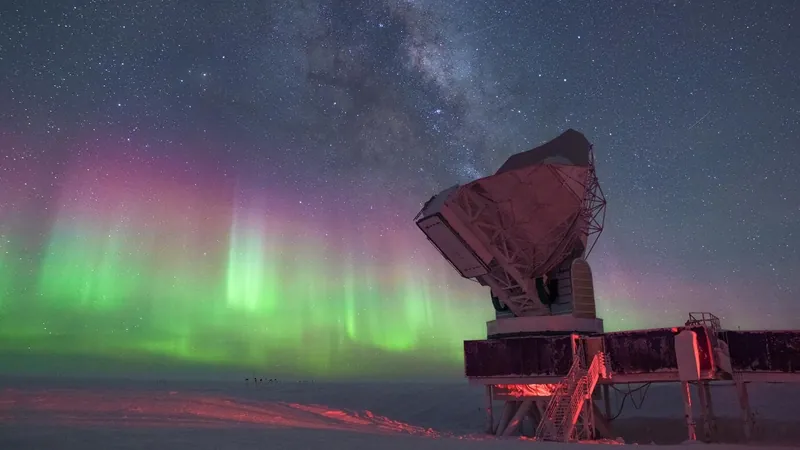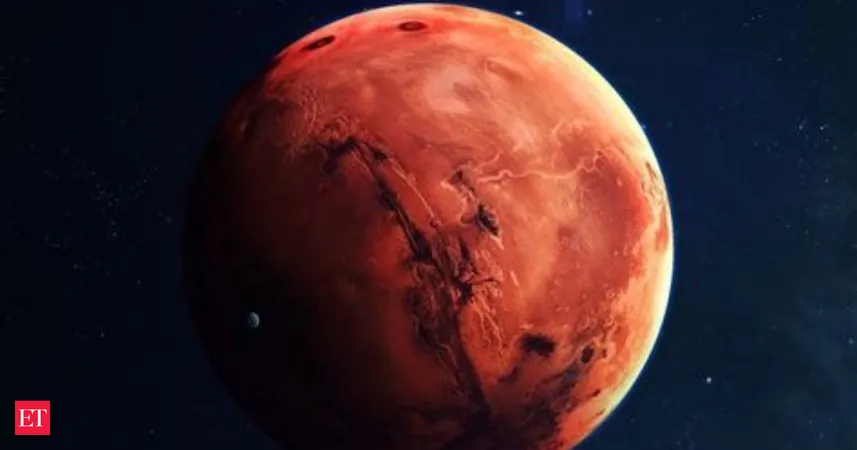
Unlocking the Secrets of Neptune and Triton: A Bold New Mission on the Horizon!
2024-11-12
Author: Jacques
Introduction to the Alpbach Summer School and Mission Proposal
In a seemingly tranquil town nestled in the Austrian Alps, groundbreaking ideas for space exploration are taking shape. Alpbach, an idyllic community located near the Austrian-Lichtenstein border, has been the backdrop for innovative thinking for over four decades as students and professors gather annually at the Alpbach Summer School.
This year, the highlight of the summer school was the proposal of an ambitious dual-mission aimed at Neptune and its enigmatic moon Triton, leveraging state-of-the-art technology initially designed for the Jupiter Icy Moons Explorer (JUICE) mission. But why should we direct our focus towards these distant worlds?
The Mysteries of Neptune and Triton
The last time humanity laid eyes on the icy giant Neptune was during NASA's Voyager 2 flyby in 1989, a journey that began with its launch in 1977. The data collected by Voyager was invaluable yet limited, sparking intrigue about Neptune’s unique features, such as its astonishingly tilted magnetosphere, which angles at 47 degrees. The mysteries don’t stop there; Neptune’s interior remains largely hidden from us, presenting a divergence from the other gas giants in our solar system.
Triton, Neptune's moon, further deepens the intrigue. Its retrograde orbit suggests that it is a captured body, offering a glimpse into Trans-Neptunian Objects and possibly the history of our solar system. During the Voyager mission, Triton revealed geysers that blasted dark plumes into space, hinting at geological activity that we still largely do not understand.
The TUNE-PIANO Mission
Boldly charting a course to these distant realms requires meticulous planning. The 'Blue' team at the Alpbach Summer School proposed the Triton Unveiler & Neptune Explorer (TUNE) mission. This ambitious endeavor involves launching an orbiter, TUNE, designed to execute 40 flybys of Triton while orbiting Neptune an astounding 600 times. Loaded with cutting-edge sensors, including a radiometer, spectrometer, and altimeter, TUNE aims to tackle critical scientific objectives such as mapping temperature variations in Neptune’s atmosphere and analyzing the surface composition of Triton.
Complementing TUNE is the Probe for Inner Atmospheric Neptune Observations (PIANO), a craft equipped to penetrate Neptune's atmosphere and relay vital data back to TUNE as it descends. This dual approach could finally unveil the secrets lurking within this icy giant.
The Importance of Timing
The existing technology from the JUICE mission not only enhances feasibility but also reduces overall costs, an urgent factor to consider given Neptune's positions in the cosmic clock. By the 2070s, the section of Triton responsible for its dark plumes will face years of perpetual darkness. Timing is crucial, and a launch is best executed before this occurs to gather the needed data.
Conclusion
As we ponder the dreamy future of Triton and Neptune exploration, it remains unclear if any leading space agencies will adopt the TUNE-PIANO mission as a fundamental part of their agendas. With the clock ticking, the call to action for scientists and engineers is louder than ever. Will we finally embark on this revolutionary journey to unveil the mysteries of our solar system, or will the wonders of Neptune and Triton remain locked away, waiting for the right moment? Only time will tell!
Stay tuned for more updates as we aspire to take space exploration to new heights—after all, the final frontier awaits!









 Brasil (PT)
Brasil (PT)
 Canada (EN)
Canada (EN)
 Chile (ES)
Chile (ES)
 España (ES)
España (ES)
 France (FR)
France (FR)
 Hong Kong (EN)
Hong Kong (EN)
 Italia (IT)
Italia (IT)
 日本 (JA)
日本 (JA)
 Magyarország (HU)
Magyarország (HU)
 Norge (NO)
Norge (NO)
 Polska (PL)
Polska (PL)
 Schweiz (DE)
Schweiz (DE)
 Singapore (EN)
Singapore (EN)
 Sverige (SV)
Sverige (SV)
 Suomi (FI)
Suomi (FI)
 Türkiye (TR)
Türkiye (TR)